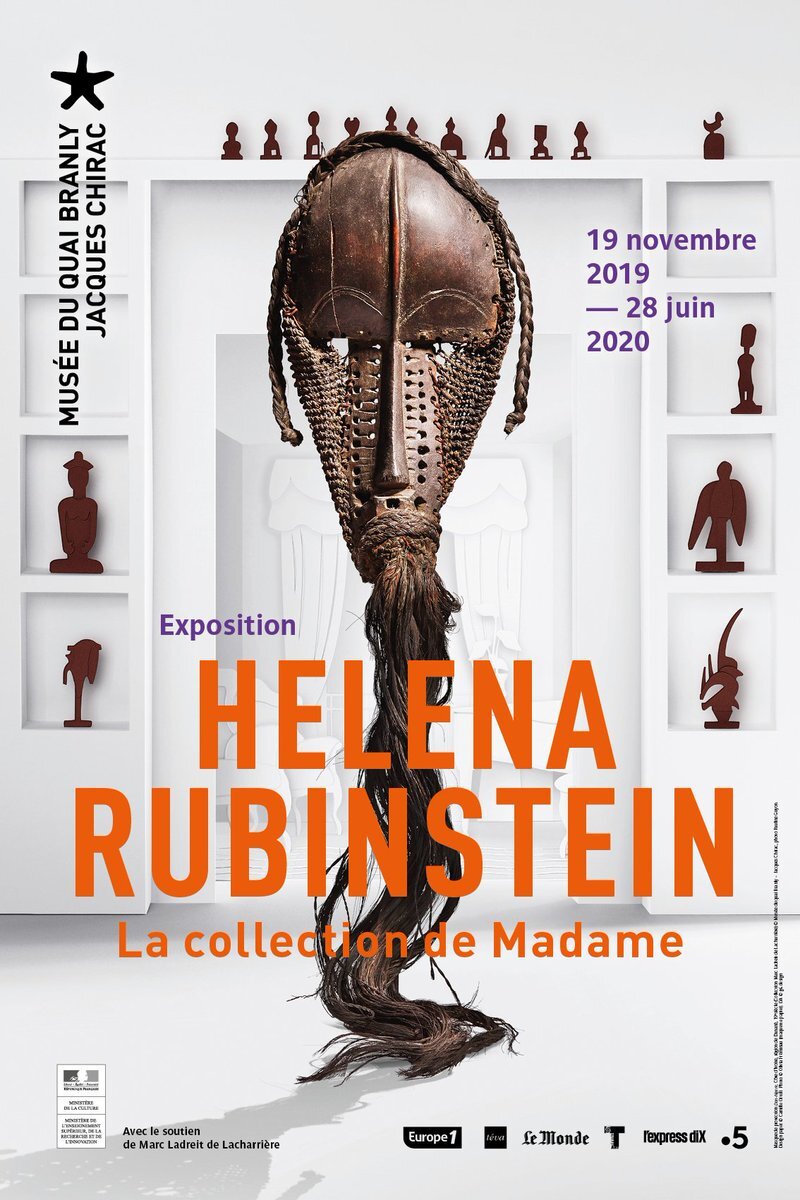Helena Rubinstein: Madame's Collection at Musée du quai Branly — Jacques Chirac
HELENA RUBINSTEIN
Madame’s Collection
November 19, 2019 — June 28, 2020
Examining non-Western arts through the collection of Helena Rubinstein. The exhibition reveals the fascination that African art held for this pioneer of cosmetics, an avant-garde patron and collector in the early 20th century.
An extraordinary figure, the first 20th century business woman, a self-made and emancipated woman, a visionary... There are no shortage of superlatives to describe the incredible rise to fame of Helena Rubinstein (1870-1965), dubbed the Empress of beauty by Cocteau, but her role as an experienced collector and a pioneer in the recognition of African and Oceanic arts in Europe and North America is often overlooked.
Primarily amassed in Paris through her various encounters, "Madame’s collection", now dispersed, comprised over 400 pieces of non-European art including precious Kota and Fang reliquary guardians, exceptional Baoulé, Bamana, Senoufo and Doghon pieces stood alongside works by contemporary painters and sculptors such as Chagall, Braque and Picasso, as well as the array of other spheres covered by the collection.
The exhibition places the spotlight on her passion for non-Western arts - primarily African art - through sixty pieces, as well as her fascination for their expressive intensity and character. It was in the 1910s that she first discovered these arts through the sculptor Jacob Epstein, an interest that continued as she encountered the avant-garde collectors in Paris and which she brought into her interior décors in Paris, New York and London, not solely for aesthetic reasons but to educate her female clientèle at her beauty salons worldwide and through her participation in major exhibitions.
Watch the trailer for Helena Rubinstein: Madame’s Collection at Musée du Quai Branly — Jacques Chirac.





